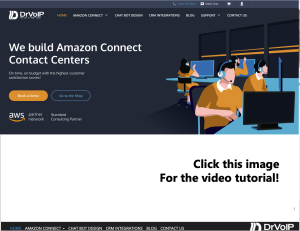Our own LLM!
By DrVoIP — Where IT Meets AI, in the Cloud
Introduction: The Shift Toward Private Intelligence
AI has moved from “interesting demo” to mission-critical infrastructure. As organizations push AI deeper into customer interactions, agent assistance, knowledge operations, and forecasting, the uncomfortable truth becomes clear:
You can’t run your business on someone else’s brain.
Below are the top reasons enterprises are shifting from public, shared AI models to private, domain-trained LLMs deployed on platforms like Amazon Bedrock, SageMaker, HuggingFace, ECS, EKS, or on-prem GPU infrastructure.
1. Security: Your Data Stays Inside Your Walls
Public LLMs require that your prompts and context be sent to a third-party model host. Even with “no training” guarantees, the risk profile remains.
- Controlled data paths
- No external logging
- Compliance with HIPAA, PCI, SOX, FedRAMP
- Private VPC deployment with IAM + KMS protection
For Contact Centers handling customer PII, private models are no longer optional.
2. Confidentiality: Your IP Is a Strategic Asset
Your internal knowledge is part of your competitive moat—price lists, contracts, troubleshooting workflows, customer history, engineering diagrams, HR processes.
A private LLM ensures this data never crosses a public AI boundary.
3. Pre-Training Advantages: A Private Model Speaks Your Language
Public LLMs are brilliant generalists. Your organization is not.
A private model can be:
- Pre-trained on your domain data
- Fine-tuned on historical conversations
- Aligned with your brand voice
- Optimized for Amazon Connect, Lex, Q, Bedrock KBs, or internal APIs
Public LLMs are smart. Private LLMs are smart for your business.
4. Predictable Costs & Lower Long-Term Spend
Public LLM costs spike with usage—long prompts, concurrency surges, large context windows.
Private LLMs offer:
- Predictable inference cost
- Control over hardware (GPU / CPU)
- Scaling designed for your traffic patterns
- Sharable infrastructure across business units
Heavy users (contact centers, finance, healthcare) see major savings.
5. Governance, Compliance & Control
Businesses require:
- Audit logs
- Model versioning
- Content guardrails
- Explainability
- Responsible-AI policies
- Data residency guarantees
Public LLMs simply cannot satisfy all enterprise controls. Private deployments can.
6. Performance: Faster, Closer, and Tuned for Real-Time Systems
Deploying a private LLM in your AWS Region—or even inside your VPC—results in:
- Lower latency
- Higher throughput
- Custom prompt flows
- Ability to embed proprietary knowledge directly
For Amazon Connect agent assistance and customer self-service, latency is everything.
7. Independence From Vendor Roadmaps
Public LLMs come with strings:
- Model changes outside your control
- Pricing changes
- Content restrictions
- Outages
- Usage limits
A private LLM frees you from third-party constraints.
8. Strategic Advantage: Your Model Becomes a Business Asset
A private LLM becomes a:
- Productivity engine
- Knowledge hub
- Agent assistant
- Training system
- CX multiplier
- Competitive moat
This AI capability becomes part of your intellectual property, not something rented.
9. Compute Reality Check: Running Your Own LLM Is Easier in 2025
Modern optimizations make private models practical without massive infrastructure:
- Quantization
- MLX, llama.cpp, vLLM, TGI
- Smaller 1B–7B domain models
- AWS-managed deployments (Bedrock Custom Models, SageMaker Endpoints)
You no longer need racks of GPUs—just smart engineering.
Conclusion
Public LLMs are excellent for experimentation. But running your business on them is like storing your customer database on a public Google Doc.
Private LLMs offer:
- Security
- Confidentiality
- Performance
- Lower long-term cost
- Operational control
- A genuine strategic advantage
If your organization is exploring private or hybrid LLM architectures, DrVoIP can help you design a strategy that fits your business, budget, and existing cloud investments.
Where IT Meets AI — in the Cloud.

